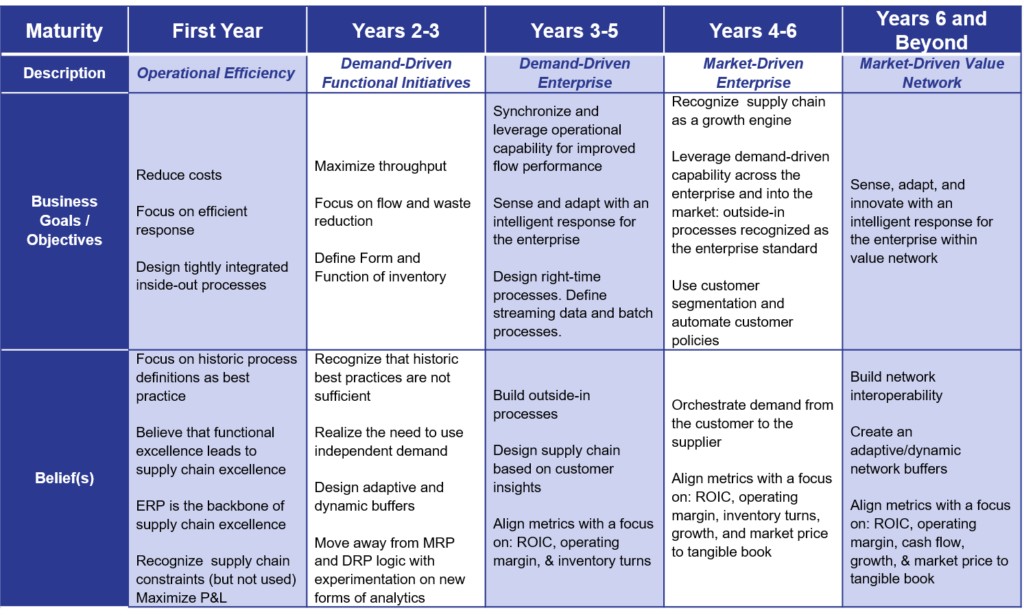 Today Thoma Bravo, a private equity investment firm, announced a definitive agreement to purchase Elemica, a provider of Supply Chain Operating Networks for the chemical industry. In 2014 Thoma Bravo acquired GHX, a Supply Chain Operating Network for healthcare. The Elemica announcement contained the obligatory positive quotes and promises to customers.
Today Thoma Bravo, a private equity investment firm, announced a definitive agreement to purchase Elemica, a provider of Supply Chain Operating Networks for the chemical industry. In 2014 Thoma Bravo acquired GHX, a Supply Chain Operating Network for healthcare. The Elemica announcement contained the obligatory positive quotes and promises to customers.
Is the announcement good for the industry? My view? I think that it is too early to tell. Normally the only winner in a technology acquisition is the original venture capitalists of the company being acquired. It is seldom positive for the line-of-business user. The technology market for B2B supply chain is consolidating. This announcement is consistent with this trend. In 2015 Insight acquired E2open, and Infor acquired GT Nexus. In 2014 OpenText acquired GXS. While, in 2012, SAP acquired Ariba.
A Look at History
The Supply Chain Operating Network technology market evolved from the trading exchange market in 2000-2005. In this period the concept of trading exchanges were largely overhyped and the solutions under-delivered. Consequently, the number of trading exchanges collapsed: over 450 consolidated into 12. Over the course of the last decade the remaining solutions struggled. The technology promise was ahead of technology capabilities.
Today technologies allow the delivery on the promise, but ironically, as technology capabilities improve and innovation to create new solutions explodes, the ownership structure is becoming more conservative. The acquisitions follow a pattern. There is an announcement and then there is a layoff of employees. This is usually followed by a period of indecision, delaying the product road map. While it is too early to judge the impact of the acquisition strategy on E2open and GT Nexus, it is clear that SAP’s acquisition of Ariba slowed development and innovation. We are just now starting to see innovation return to JDA and GXS assets under OpenText ownership.
The Promise of Innovation
In the last five years the Supply Chain Operating Network technologies evolved canonical data structures to enable communication in a many-to-many data model. This allows the flow of information from many trading partners to many trading partners and allows each trading partner to communicate in their preferred protocol. With the evolution of big data analytics, these Supply Chain Operating Network architectures are evolving: prescriptive and cognitive analytics enhanced by more advanced visualization and benchmarking. After a very tough decade, the Supply Chain Operating Network solutions were evolving with strong development plans during the period of 2012-2015.
Figure 1. Evolution of Supply Chain Operating Networks with a Many-to-Many Data Model Supported by a Canonical Infrastructure and Intelligence Driven by Cognitive Learning

As the Supply Chain Operating Network technology companies sort out product development paths for new products, and leadership teams reposition their footprints, one of their barriers is the lack of focus on B2B Commerce programs between buyers and suppliers. As shown in Figure 2, buyers and suppliers push continuous improvement, and Kaizen events, in supplier development programs over B2B programs. The relationships are buy/sell. B2B effectiveness is about flow, transparency and proactive decision-making in a multi-tier environment. The market is conservative. There is ERP burnout and funds are tight.
The lack of early adopters for B2B network connectivity is a barrier for innovation. This is why we are sponsoring small group interactions between technology and business leaders to drive innovation in this space.
Figure 2. Supplier Development Programs

Building Market-Driven Value Networks
Companies struggle with functional processes and are stuck in traditional inside-out process paradigms. There is a belief that the backbone of the extended value chain is ERP.
As companies mature, there is a focus on flow. Within the company there are often many demand-driven initiatives. Demand-driven lacks a consistent definition. This can include demand sensing into Distribution Requirements Planning (DRP), Demand-Driven Materials Requirement Planning (DDMRP), the Internet of Things sensing, and the use of independent demand into transportation planning. As companies mature, these multiple demand-driven initiative(s) coalesce. With the higher level of outsourcing there is a focus on building market-driven value networks. With this maturity, the evolution of B2B technologies grow in importance.
Table 1, The Market-Driven Value Network Maturity Model

A Market-Driven Value Network is an adaptive network focused on driving value-based outcomes. The network senses, translates, and orchestrates market changes (buy- and sell-side markets) bidirectionally, across multiple tiers, with near real-time data to align sell, deliver, make, and sourcing organizations outside-in.
To build this model, I flew to Arizona to develop it with Carol Ptak of the Demand-Driven Institute. Carol and I have been on different, but similar journeys. While I started my research with a focus on demand-driven processes in the channel/distribution processes, Carol’s focus has been on flow in materials and operations. Our research is starting to coalesce. We have similar beliefs on the use of independent demand, the building of adaptive/dynamic buffers, and the need for new solutions that can use and translate based on independent demand data. Together, we built this model.
So as the dust settles on the acquisition of Elemica and the other B2B solutions, I would love to see the companies use new forms of analytics to build multi-tier demand and supply networks, using the concepts of sensing and shaping independent demand, while translating independent demand signals into adaptive/dynamic buffers and an improved operational signal for supply. I am convinced that the demand is there if the technology vendors can regroup from the wave of acquisitions and drive innovation.
How Do You Find Out More?
 We are currently putting the finishing touches on the Supply Chain Insights Global Summit. (Registration is open for the first 125 participants. We limit the number of technology providers to 25% of the audience.) The conference will be live-streamed as we discuss five themes:
We are currently putting the finishing touches on the Supply Chain Insights Global Summit. (Registration is open for the first 125 participants. We limit the number of technology providers to 25% of the audience.) The conference will be live-streamed as we discuss five themes:
- Supply Chains to Admire. Financial Results. A critical look at supply chain processes impacting financial results through the Supply Chains to Admire research.
- Economic Vision of Supply Chain 2030. It is hard to know where we are going if we are not clear on the end state. Join us for a critical view of supply chain 2030 through the insights of leading economists.
- New Business Models. Making the Digital Pivot. Sit back and listen as companies share insights on the adoption of robotics, the Internet of Things, 3D printing, manless vehicles, new forms of analytics, and the emergence of new business models like Alibaba, Amazon, and Uber.
- Building Supply Chain Talent and Leadership. Insights on leadership, continuous improvement and talent development for emerging markets.
- Supply Chain 2030. Building Outside-In Processes. Experience the difference between traditional inside-out and new outside-in processes through the use of new forms of analytics.
About Lora:
 Lora Cecere is the Founder of Supply Chain Insights. She is trying to redefine the industry analyst model to make it friendlier and more useful for supply chain leaders. Lora has written the books Supply Chain Metrics That Matter and Bricks Matter, and is writing her third book, Leadership Matters. She also actively blogs on her Supply Chain Insights website, at the Supply Chain Shaman blog, and for Forbes. When not writing or running her company, Lora is training for a triathlon, taking classes for her DBA degree in research, knitting and quilting for her new granddaughter, and doing tendu(s) and Dégagé (s) to dome her feet for pointe work at the ballet barre. Lora thinks that we are never too old to learn.
Lora Cecere is the Founder of Supply Chain Insights. She is trying to redefine the industry analyst model to make it friendlier and more useful for supply chain leaders. Lora has written the books Supply Chain Metrics That Matter and Bricks Matter, and is writing her third book, Leadership Matters. She also actively blogs on her Supply Chain Insights website, at the Supply Chain Shaman blog, and for Forbes. When not writing or running her company, Lora is training for a triathlon, taking classes for her DBA degree in research, knitting and quilting for her new granddaughter, and doing tendu(s) and Dégagé (s) to dome her feet for pointe work at the ballet barre. Lora thinks that we are never too old to learn.







